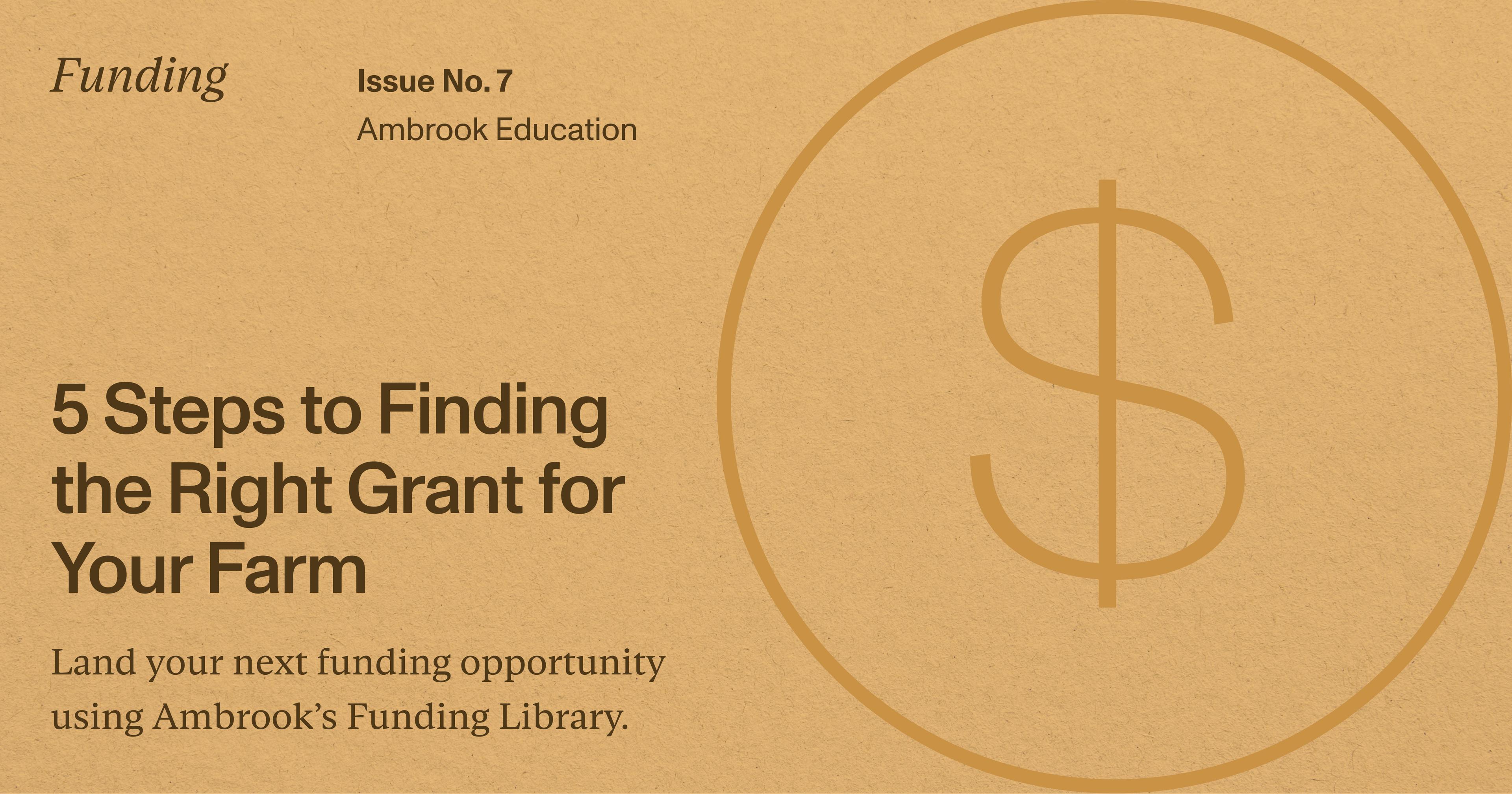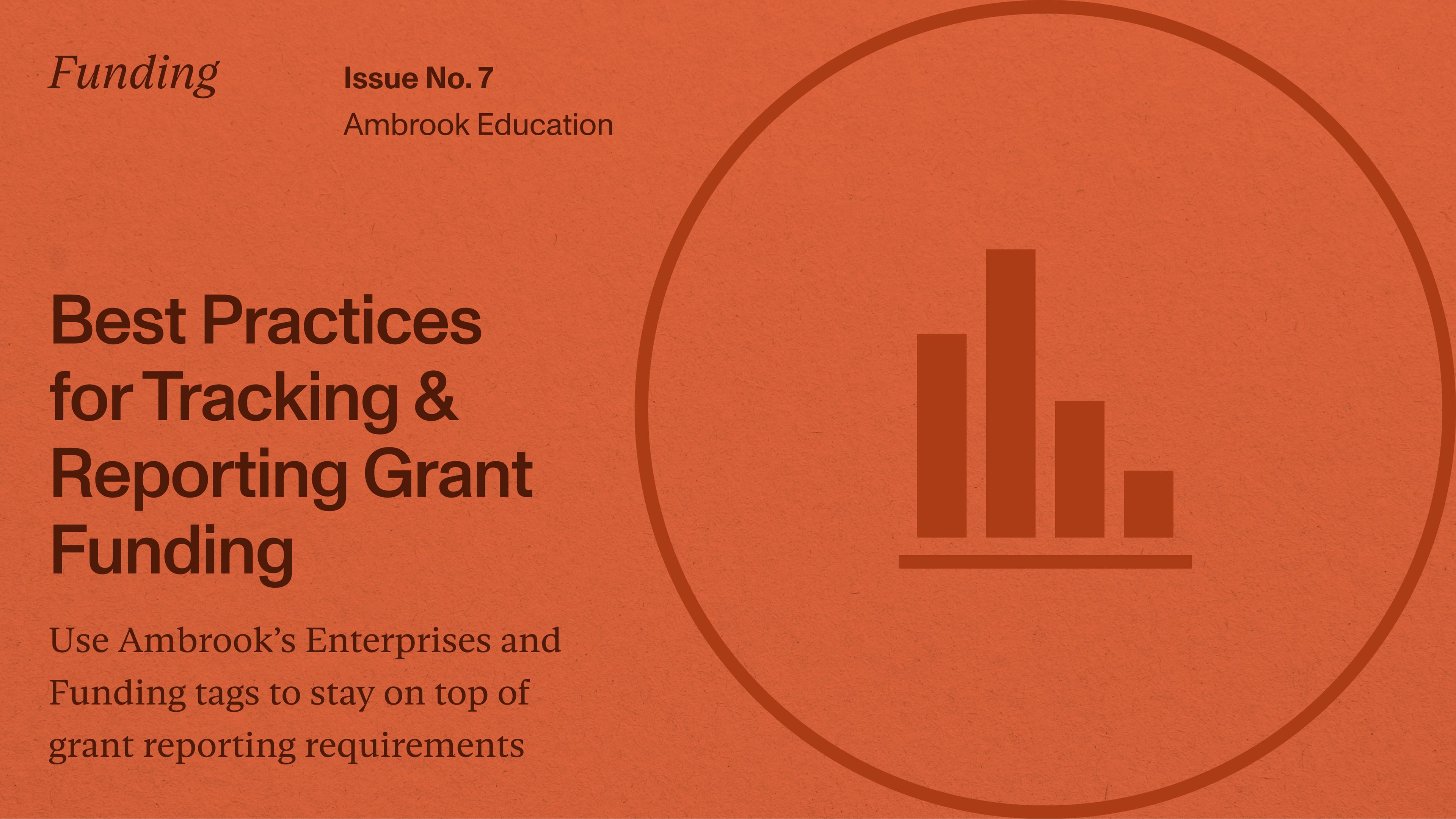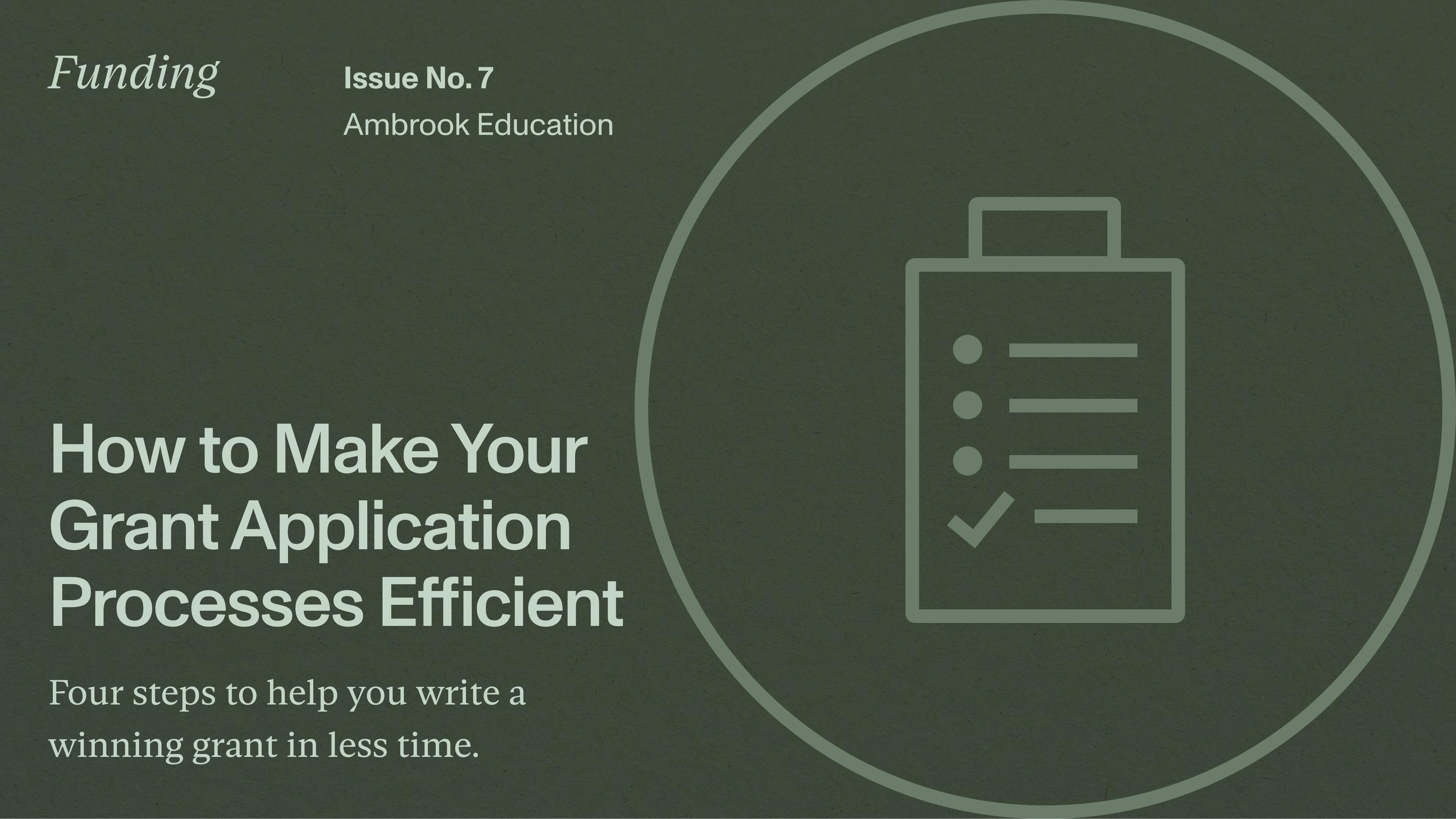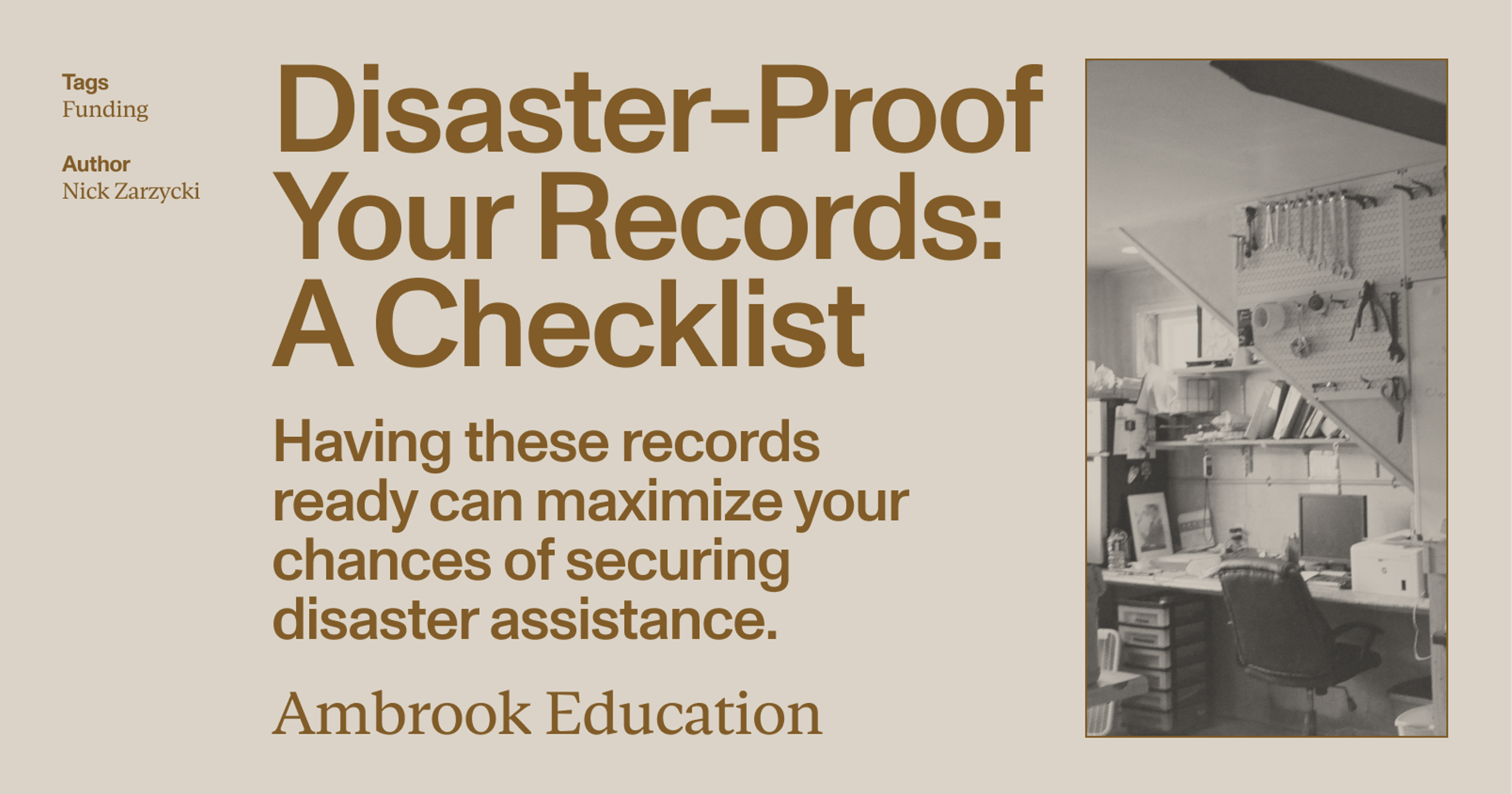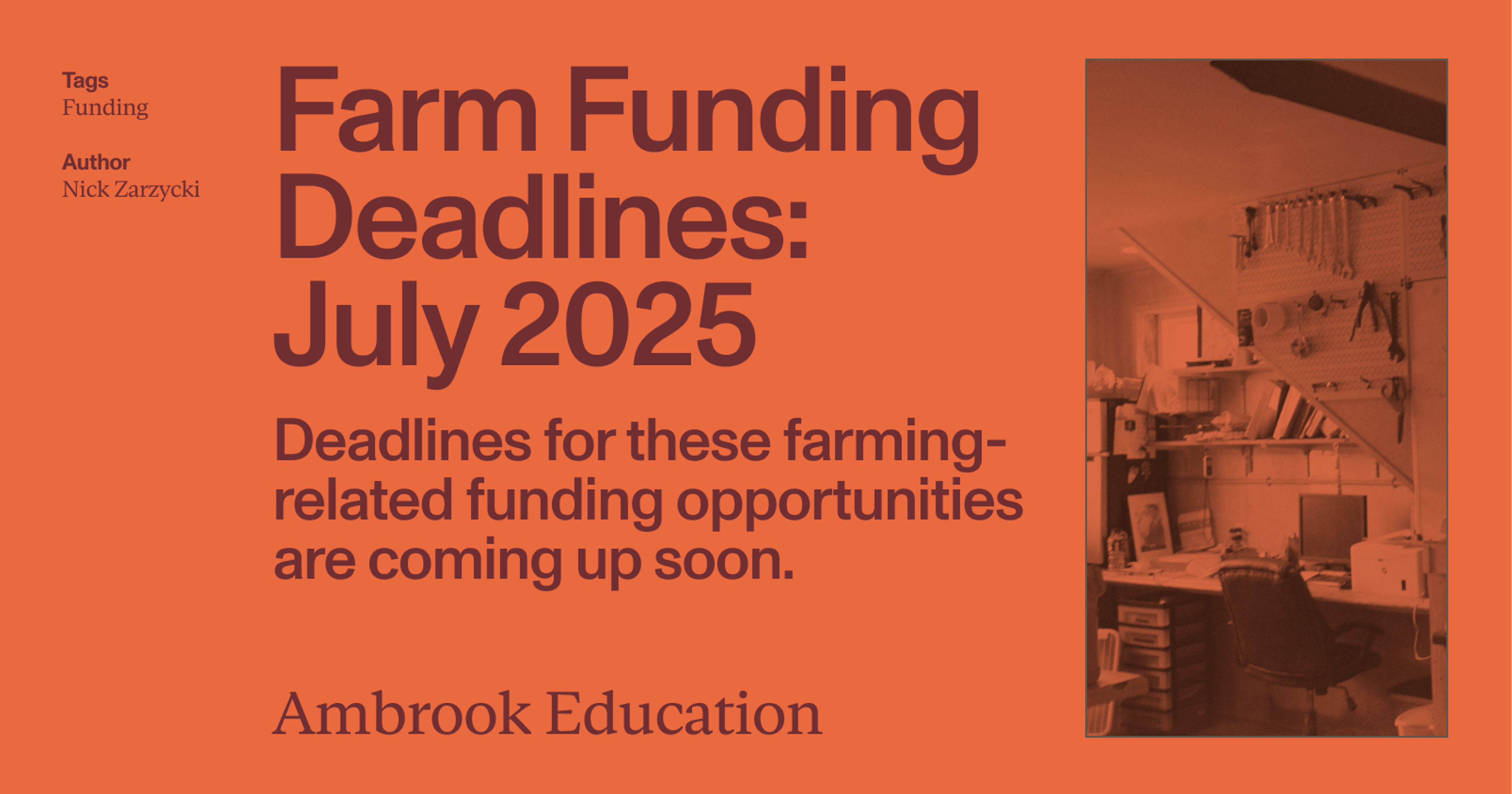Land your next funding opportunity using Ambrook’s Funding Library
Finding the right grant for your farm can feel like looking for a needle in a haystack. With so many funding opportunities available, it’s crucial to choose the ones that align with your business goals and won’t distract you from running your operation. Here’s a simple and effective five-step guide to help you secure your next round of funding.
Step 1: List Your Projects
Start by listing the project(s) you want to accomplish in the next two years. Detail the scope of each one and specify the necessary resources. Clearly defining your two-year agenda will help clarify the type of funding opportunities you need and create a realistic budget to hit your targets.
Note: Let your projects inform your grant search, not the other way around. This helps you avoid pursuing projects that distract you from your core operations.
Step 2: Create a Budget
With your ideal projects identified, craft a budget estimating the costs. Include expenses like land, infrastructure, labor, equipment, supplies, and technical support. Your budget can be rough but aim for it to be thorough. Break down each type of expense into sub-categories and assign estimates. Here’s an example of what a snapshot of your budget might look like:
Equipment
Tractors & Heavy Machinery
Tractor Lease: $600
Attachments:
5 Shank Ridge Cultivator 1 Row: $450
Seeders: $1,500
Aerator: $750
Sprayer: $450
Comparing your estimates to the actual costs once the project is operational can also help you establish an accurate baseline for future projects and grant applications. If you have recorded organizational history, reference your prior accounting data to ensure accuracy. If this is your first agricultural operation, don’t sweat it. There are plenty of grants and funding opportunities available to beginners and online forums to access communities that can provide helpful guidance and mentorship when getting started.
If you’re searching for a grant that provides more immediate assistance due to a weather event or other natural disaster, identify what support you need to get back up and running in your budget. Include the cost of assistance, replacements for damaged supplies, and any supporting financial documentation of economic loss. Ambrook maintains a curated list of disaster relief programs so you can quickly identify the grants you qualify for.
Step 3: Identify Your Capital Stack
Once you’re armed with your projects list and budgets, you’re ready to start the funding search. Funding can come from various avenues, but the most popular types you’ll encounter are loans and grants. The key difference between the two is that loans are expected to be repaid (often with interest) while grants are financial awards provided by donors for a specific idea or project. Loans provide more flexibility in what the funds can be used for and depend on individual credit and financial standing for qualification. Grants, on the other hand, often have strict constraints on what the funding can be used for and are much more competitive.
Note: If you’re primarily interested in exploring loan options, view Ambrook’s curation of available programs here. For specific information on the types of US Farm Services Agency (FSA) loans, read our explainer here.
Grants are awarded by federal agencies such as the US Department of Agriculture (USDA) and by private foundations. They can range in value from anywhere between $5K-$250K and vary in competitiveness depending on the amount and eligibility requirements. Requests for Proposals (RFPs) are documents made public by grant donors that detail a grant’s scope and funding stipulations. They provide information on eligibility, funding goals, and funding amounts to help you assess if you might be a fit. Grants might be a preferable funding option for you if you are:
Launching a new project that’s innovation-focused with public benefits
Strapped for cash and not in a position to take on loan repayments
Focused on research and development (R&D) objectives
Not working on a revenue-generating project but towards other societal benefits
Transitioning your operation to sustainable or conservation-oriented practices
In need of disaster relief
Creating an educational program that serves your local community
Your project may require a mix of different types of funding or you may qualify for several types of grants. Identify your ideal capital stack to meet your project needs so you’re primed for a quick and simple search process.
Step 4: Search Ambrook
With your capital stack in hand, jump to Ambrook’s Funding Library to search for funding opportunities. The key to an efficient search is filtering. Ambrook’s sophisticated search feature lets you filter your results by location, organization, type of funding, and more. With over 100 tags, you can select all applicable fields to find available grants tailored specifically for your project needs.
Instead of navigating to individual websites to search for buried RFP PDFs, you can simply click into a grant of your choice from Ambrook’s library to view a simple overview of any grant’s requirements. Everything from eligibility and terms of the funding to the deadline and necessary forms is organized for easy viewing allowing you to assess if a grant is a fit in less than 5 minutes. Additionally, you can use the Save button to keep track of all the funding programs relevant to you, eliminating the need to memorize various grant donors and program details.
For beginners unsure on what type of funding would be best suited for their project, Ambrook’s Get Recommendations tool is an effective starting point. The simple yet comprehensive survey takes less than 10 minutes to complete and immediately delivers personalized results based on factors such as your project’s expenses, production, conservation practices, sources of revenue, and personal demographic data. Farmers new to the industry can also use the Beginning Farmers tag to filter for relevant opportunities in Ambrook’s Funding Library.
Pro tip: To compensate for your lack of organizational history as a new operation, leverage your success stories from previous projects you’ve led and testimonials from mentors to demonstrate why you’re a trustworthy candidate positioned for success in your grant application.
If none of the available grants in the Funding Library fit your project needs, contact your local Natural Resources Conservation Service (NRCS) office to identify other opportunities in your location or connect with a local USDA representative in your county that can provide you with more information.
Step 5: Connect with a Coordinator
Reach out to the program coordinator using the Contact Coordinator button once you identify a few promising grant opportunities. Coordinators will be able to further assess whether you’re a good fit or not and answer more nuanced questions about the grant itself. Building relationships with program coordinators can also pay dividends. Your likelihood of winning a grant increases if you’ve successfully worked with an organization before and if they are familiar with you and your operation. Coordinators can also provide you with information that is otherwise difficult to access regarding other funding opportunities and keep you top of mind for future grants if current ones don’t fit.
Just like that, you’re equipped to secure your next grant today.
Questions? Visit Ambrook’s Funding Library FAQ to learn more.
Next Steps
Once you’ve identified the right grant, learn:
Increase your chances of securing funding by maintaining accurate books. Get a demo on how Ambrook provides you with the tools for comprehensive farm accounting that can make grant reporting a pain-free process and increase your ability to manage and acquire grant funding in the future.

